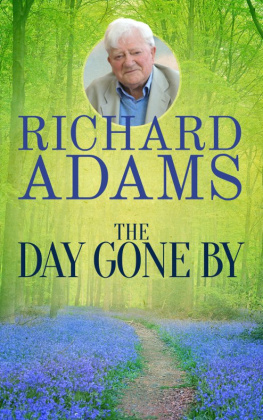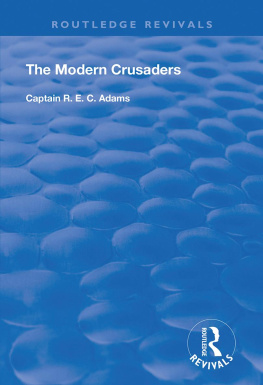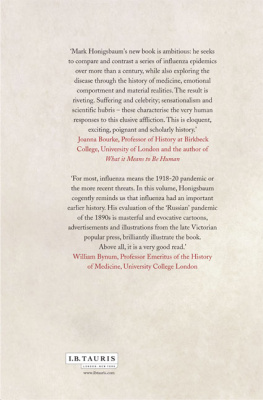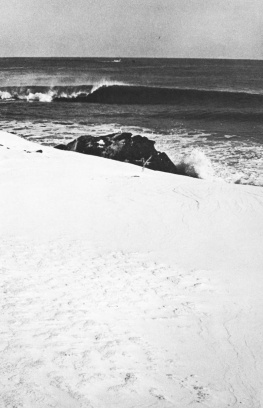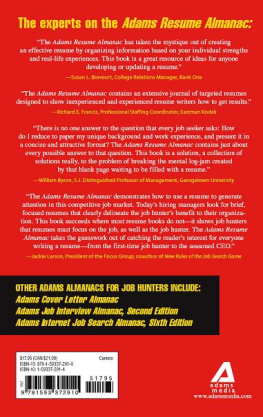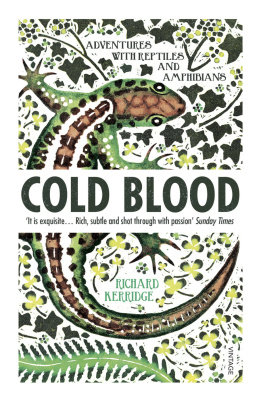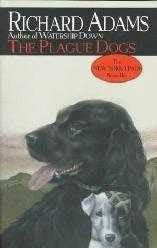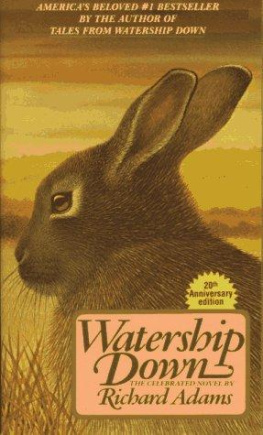THE DAY GONE BY
Also by Richard Adams
Watership Down
Shardik
The Plague Dogs
The Girl in a Swing
The Iron Wolf and Other Stories
Maia
Traveller
Travel
Voyage Through the Antarctic (with R. M. Lockley)
Picture books in verse
The Tyger Voyage
The Ships Cat
Nature
Nature Through the Seasons
Nature Day and Night (both with Max Hooper)
A Nature Diary
RICHARD ADAMS
AN AUTOBIOGRAPHY
THE DAY GONE BY
2014 Richard Adams
Richard Adams has asserted his rights in accordance with the Copyright, Designs and Patents Act 1988 to be identified as the author of this work.
Published by Watership Down Enterprises
First published and printed in 1990
First published in eBook format in 2014
ISBN: 978-1-78301-570-2
All rights reserved under International and Pan-American Copyright Conventions. By payment of the required fees, you have been granted the non-exclusive, non-transferable right to access and read the text of this e-book on-screen. No part of this text may be reproduced, transmitted, downloaded, decompiled, reverse-engineered, or stored in or introduced into any information storage and retrieval system, in any form or by any means, whether electronic or mechanical, now known or hereinafter invented, without the express written permission of the Publisher.
All names, characters, places, organisations, businesses and events are either the product of the authors imagination or are used fictitiously. Any resemblance to actual persons, living or dead, is purely coincidental.
eBook Conversion by www.ebookpartnership.com
To my grand-daughters, Lucy Johnson and Sarah Mahony with love and best wishes for the years to come.
Contents
List of illustrations
Acknowledgements
I am grateful to Miss A. Page, of the Oxford City Surveyors department, who kindly supplied me with the map of old St Ebbes which appears on page 219.
I am much indebted to Geoffrey Powell, formerly of Airborne Forces and author of The Devils Birthday: The Bridges to Arnhem, for checking the accuracy of the chapters about Operation Market Garden and making valuable comments: and also for kindly giving consent for the reproduction of the map of the plan for Operation Market Garden on page 338.
I am most grateful to Richard and Hailz-Emily Osborne, of Bradfield, who gave invaluable help over the Bradfield photographs, and to Jimmy Stow, who was equally helpful over Horris Hill.
I thank warmly my secretary, Mrs Elizabeth Aydon, who not only typed the book most accurately and conscientiously, but also picked up for me those slips and inconsistencies to which most, if not all, authors are prone.
All Thats Past
VERY old are the woods;
And the buds that break
Out of the briers boughs,
When March winds wake,
So old with their beauty are
Oh, no man knows
Through what wild centuries
Roves back the rose.
Very old are the brooks;
And the rills that rise
Where snow sleeps cold beneath
The azure skies
Sing such a history
Of come and gone,
Their every drop is as wise
As Solomon.
Very old are we men;
Our dreams are tales
Told in dim Eden
By Eves nightingales;
We wake and whisper awhile,
But, the day gone by,
Silence and sleep like fields
Of amaranth lie.
Walter de la Mare
Chapter I
My paternal grandfather, Joseph Dixon Adams, was born in 1837 - the year of Queen Victorias accession. There is a story in the family that one night in 1854 he was awakened by the stir in the village caused by a horseman bringing news of the great British victory of the Alma, in the Crimea. The village was Martock, in Somerset, lying between Taunton and Yeovil.
People were poor enough in those days: the labourers lived largely on beans, and there was a saying that if you could shake a Martock man you could hear the beans rattle: if you could shake him. A few Martock men, poor devils, were caught up in Monmouths rebellion of 1685 and duly appeared before Judge Jeffreys in the Bloody Assize. Martock has a beautiful church, with a magnificent interior roof. On the south wall, going on towards the east end, is a brass plaque in memory of my grandfather, extolling inter alia his running of the local fire brigade. They must all have been part-time volunteers, for my grandfather was not a fire officer but a doctor - a Victorian country doctor who paid visits on horseback and made up his own prescriptions. I have two of his pharmaceutical white-earthenware, lidded jars, each about ten inches high, handsomely decorated in blue and gold. One is lettered Tamarinds and the other Honey. (Tamarind pods were used as a laxative and also for allaying fever; honey was for coughs.) There would have been a third jar for leeches, but this I have never seen.
In his maturity Joseph was well-to-do, with social standing in the locality and a fine house and garden (its still there) called The Lawn. A lot must have been due to his wealthy marriage. At some time during the eighteen-sixties - and this is another family story - he rode alone to the county ball at Taunton, where he met and danced with Arabella, the daughter of Sir Cecil Beadon. Sir Cecil had recently retired as Lieutenant-Governor of Bengal. He was a grandson of Richard Beadon, Bishop of Bath and Wells (in reply to whom Hannah More wrote her famous letter defending Sunday schools. The latitudinarian bishop, who didnt like the notion of educating the poor, had told her to lay off, but she was up to him). Cecil, who was born in 1816, joined the Bengal civil service (through nepotism, of course) in 1836. He came to the notice of Lord Dalhousie and had an eminently successful career until about the last five years of his service, when - largely due to ill health - as lieutenant-governor he came badly unstuck over his handling of or failure to handle - the terrible Orissa famine. A commission of inquiry reported unfavourably on him; the Governor-General, Sir John Lawrence, saw no reason to take a different view and Cecil, albeit with a knighthood of the Star of India, retired in 1866, with plenty of money but his brilliant reputation overshadowed. He was twice married. His first wife, Arabellas mother, was born Harriet Sneyd, daughter of a major in the Bengal cavalry.
Joseph Adams married Arabella Beadon, and George, their eldest son and my father, was born in 1870. He, too, became a doctor (he ultimately became an F.R.C.S.), and was a student at Barts during the nineties. Then he returned to Martock and went into partnership with his own father. To distinguish between the two, the villagers used to refer to my grandfather as Dr Adams and my father as Dr Jarge. It must have been about 1962 when I last visited Martock, and in the church came upon a lady tidying and polishing. We chatted, and when I told her who my father had been she called her husband from the vestry, saying Ben, this is Doctor Jarges son. Well, I never! said he. Doctor Jarge! I member im well - im and is motor-cars! (Long before the First World War, during the reign of Edward VII, my father had been one of the first Toad of Toad Hall motorists, with a De Dion Bouton. My mother used to tell me how one day, when he was driving along a country lane, he saw, to his gratification, two farm-hands in a field throw down their hoes and run to the hedge to watch him go by. As he passed, one said to the other Reckon that bloody fool wont live long.)

